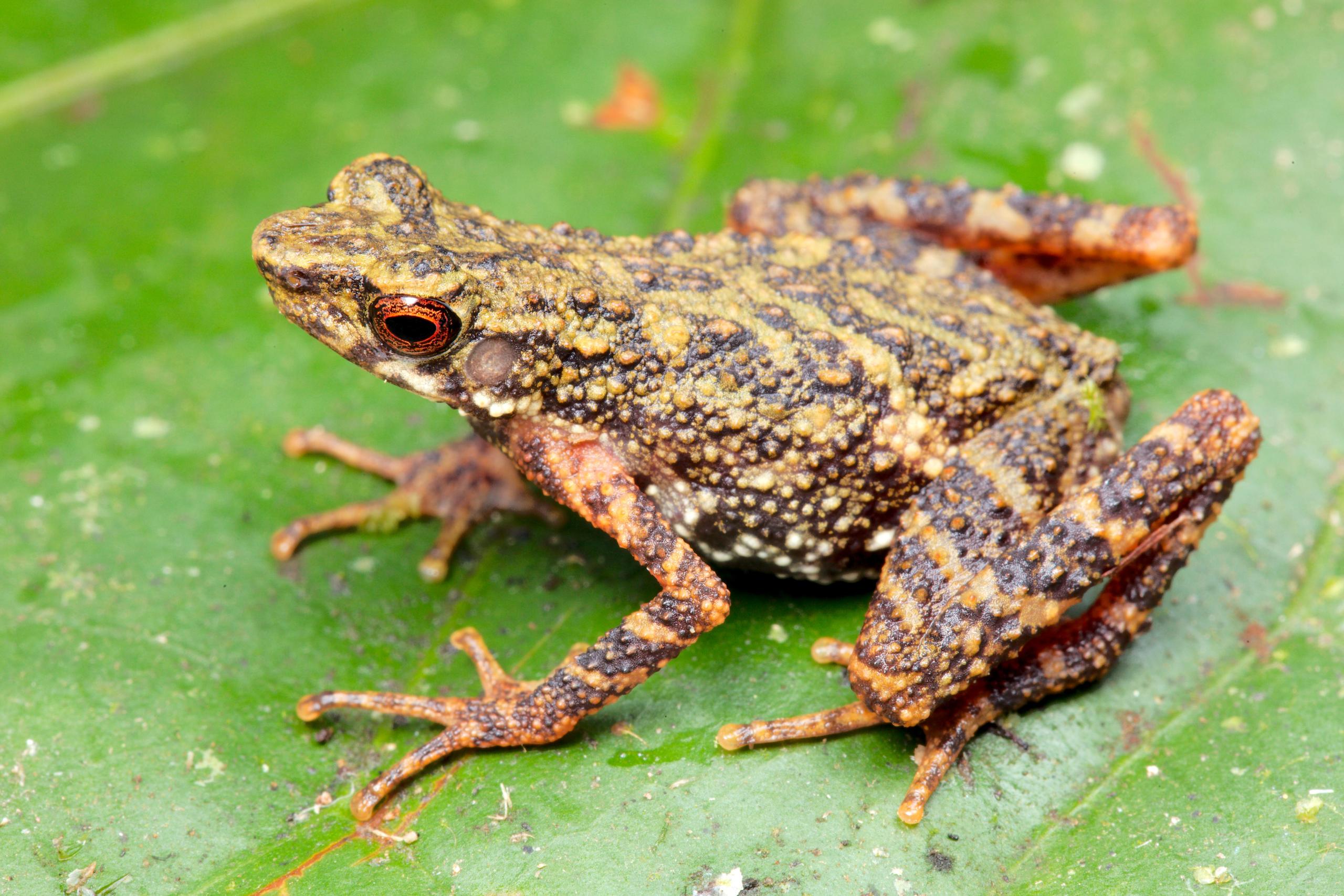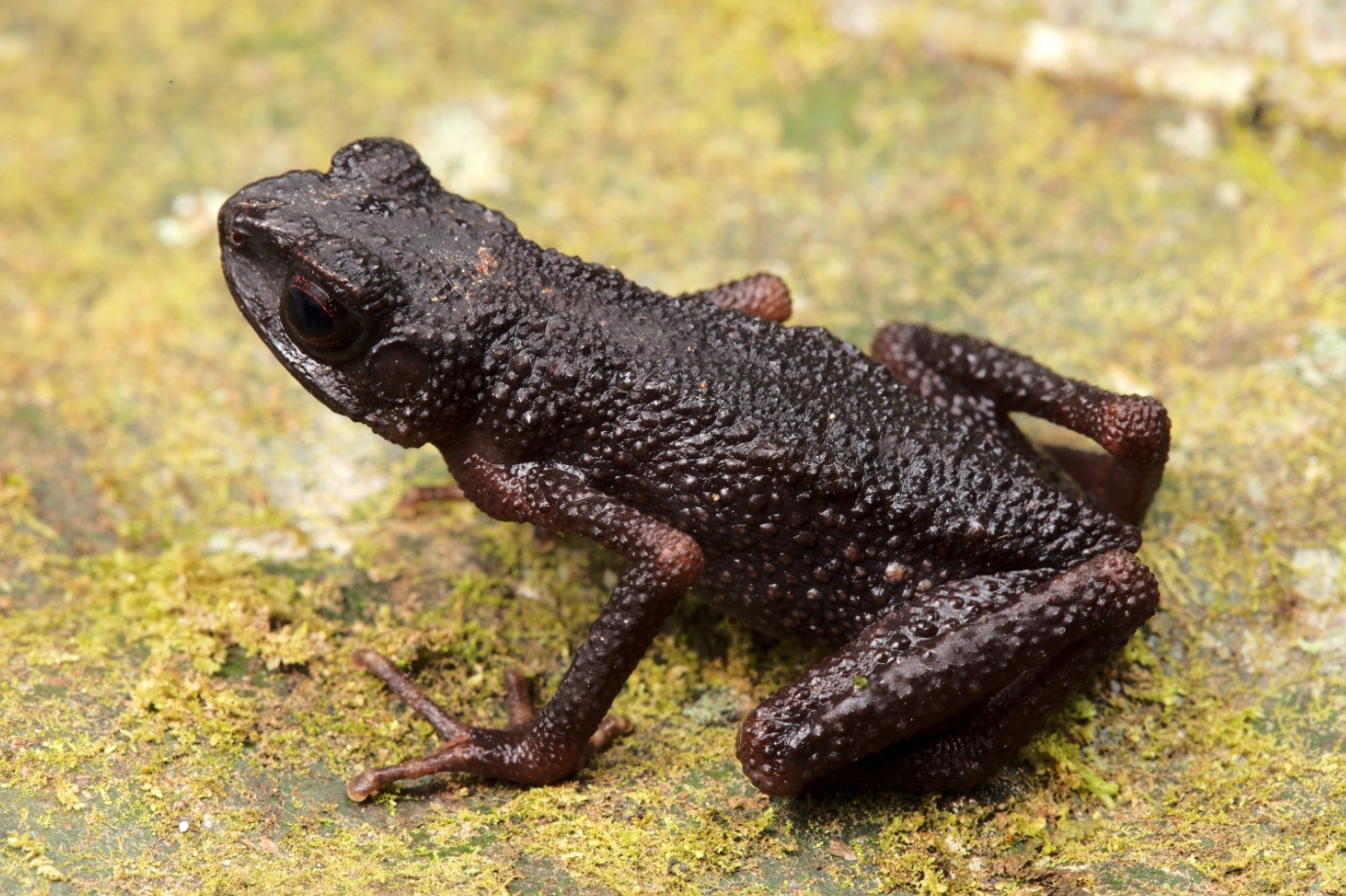Bern-led team discovers delicate new creature

On a remote plateau on the island of Borneo, a team of researchers led by a scientist from the Natural History Museum of Bern discovered what it says is a new and unusually delicate species of toad.
A photo of the stick-like toad, tinged in a mélange of yellow, brown and orange, with bulging reddish- orange tyres for eyes, makes the leafy green vegetation it is perched on appear enormous by comparison.
The museum, in an online statementExternal link posted this week, describes the research team led by the scientist Stefan Hertwig as having undertaken “an expedition straight out of an adventure novel”.
The expedition to an isolated mountain region was part of a research effort that has been going on since 2001 to study the biodiversity of Borneo – and what can be done to conserve species. The team also involves researchers from the universities of Bern, Hamburg, Germany and Kuching, Malaysia.
Ansonia teneritas is the name given to the new species of toad, which belongs to the family of stream toads. Tener is Latin for dainty; the toad, the researchers note, has quite a slender and delicate build.
Race for conservation
With a body less than 25 millimetres long, the three-fingered and three-toed creature navigates an isolated habitat on an elevated plateau.
It is an example of how much of Borneo’s biodiversity remains unknown but endangered. According to the conservation group WWFExternal link, Borneo’s rainforests – like many tropical areas around the world – are being chopped down for timber, palm oil, pulp, rubber and minerals.
The group says the area is also threatened by global growth in illegal wildlife trade, as cleared forests provide easier access to more remote areas.
The team could not tell during the expedition that the toad it had found was a new species. That was only determined after the team had returned home and did some DNA analysis at the museum.
“It lives in fast-flowing mountain streams with rocky bottoms – and apparently nowhere else,” the museum said. “It is possible that these extremely specialised habitat needs are the reason it has only been found in two places on Borneo to date.”

In compliance with the JTI standards
More: SWI swissinfo.ch certified by the Journalism Trust Initiative



You can find an overview of ongoing debates with our journalists here . Please join us!
If you want to start a conversation about a topic raised in this article or want to report factual errors, email us at english@swissinfo.ch.